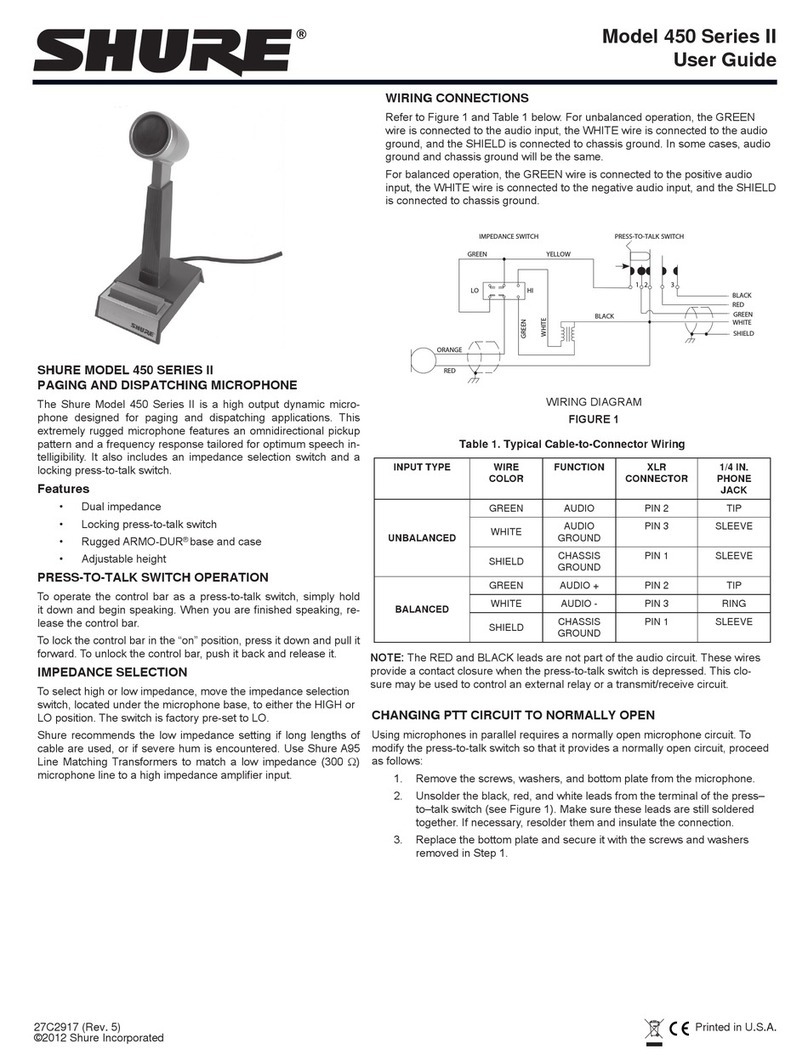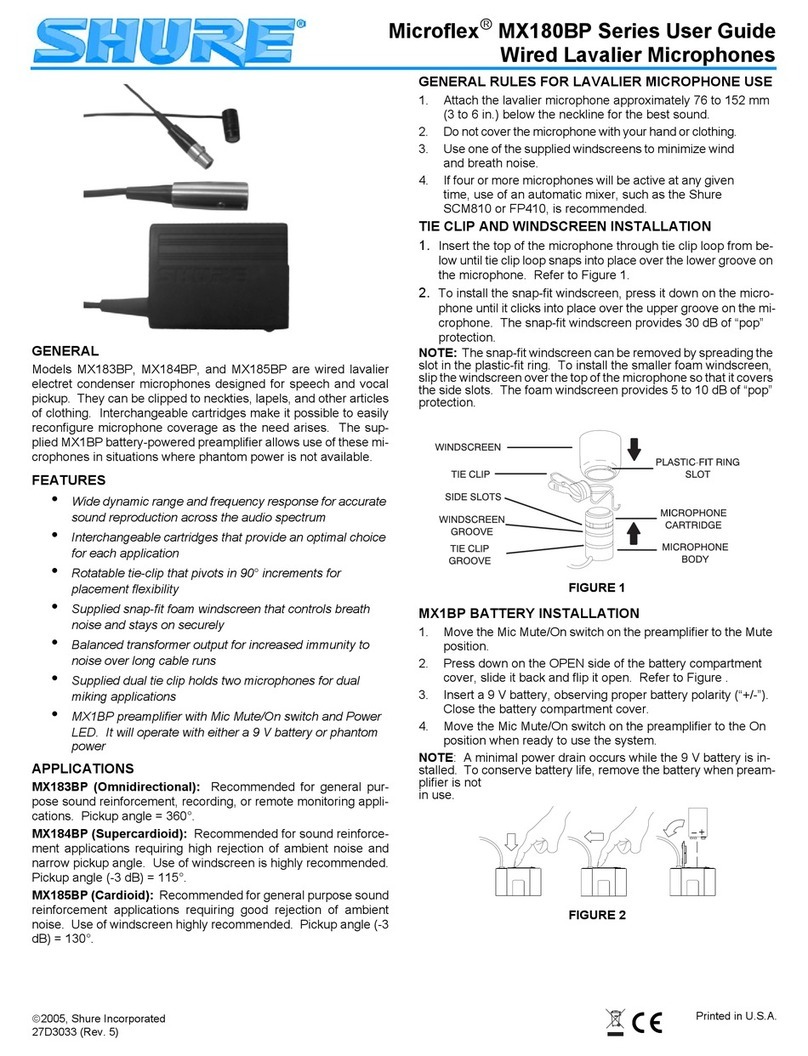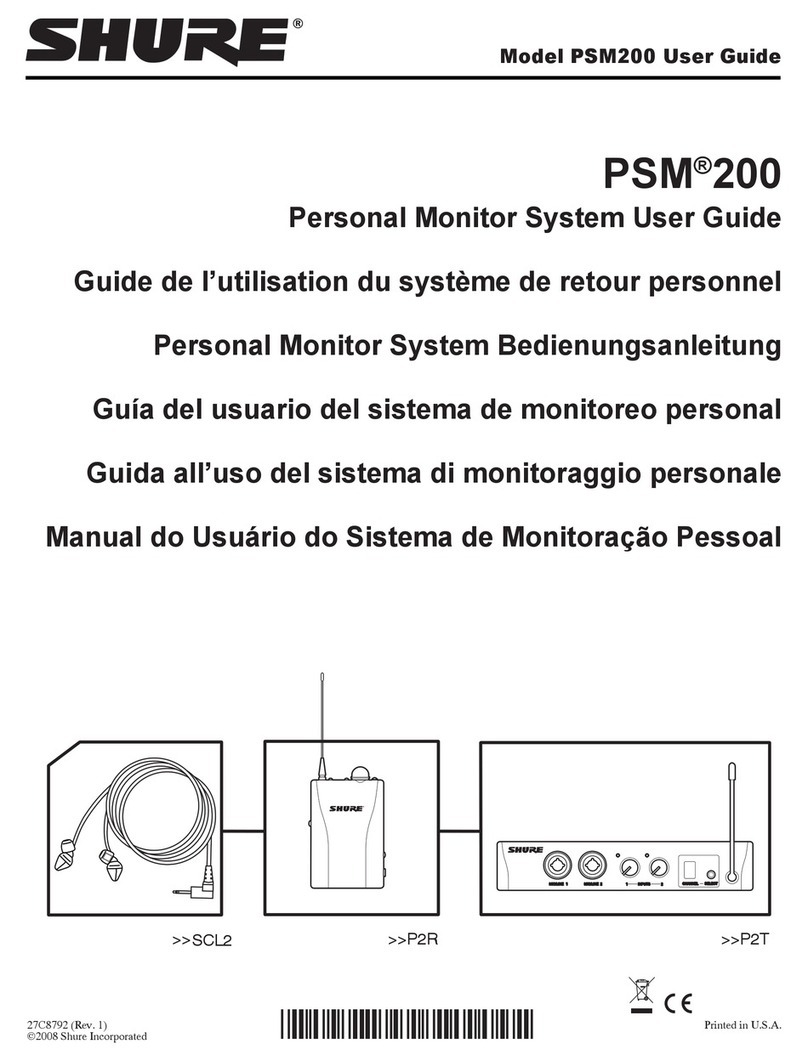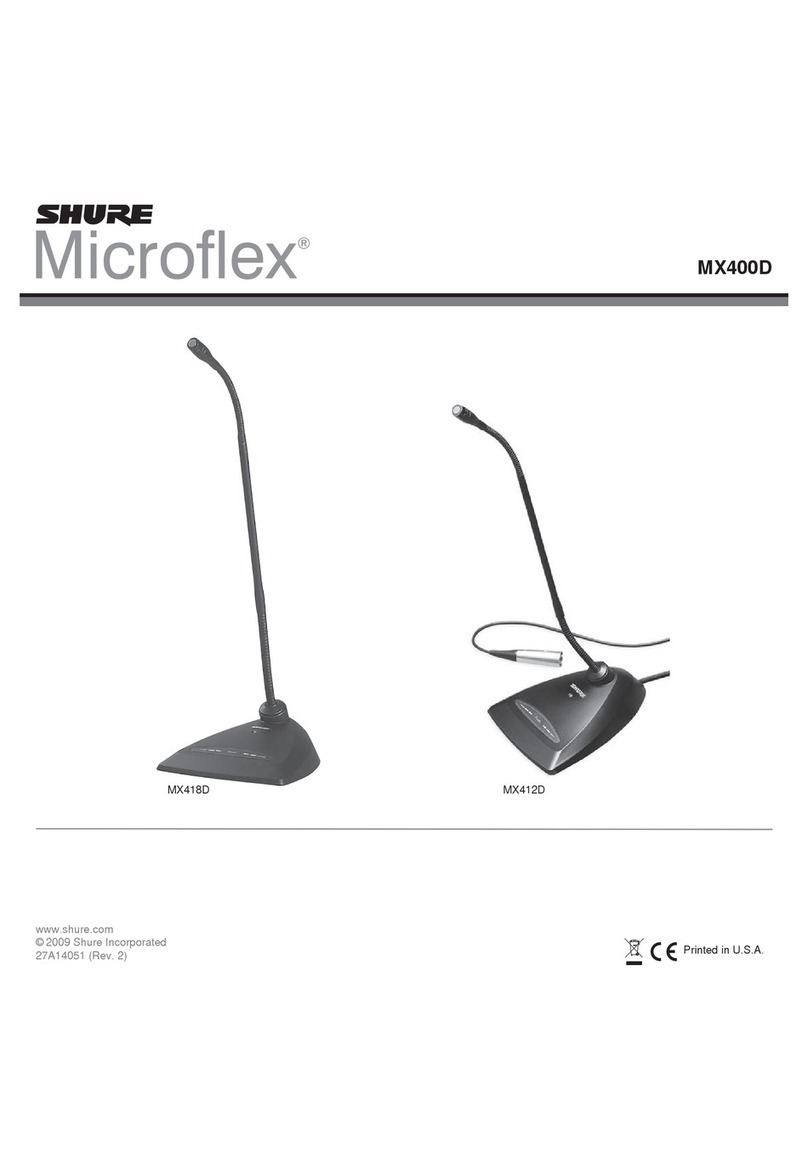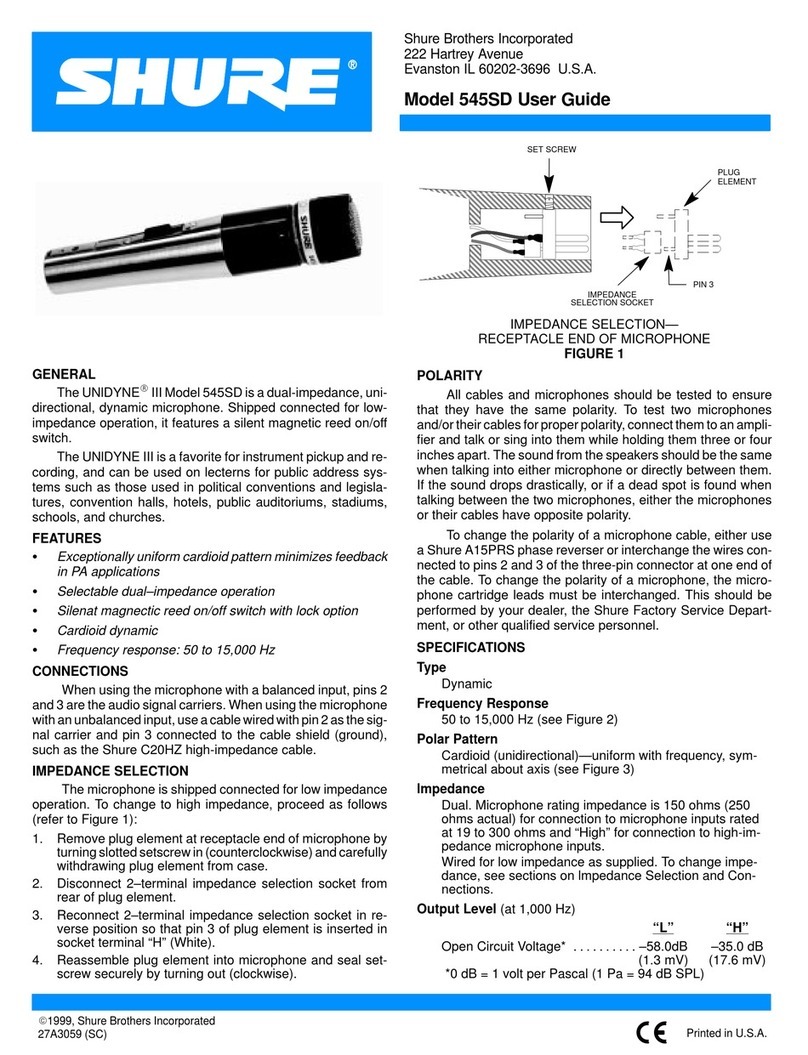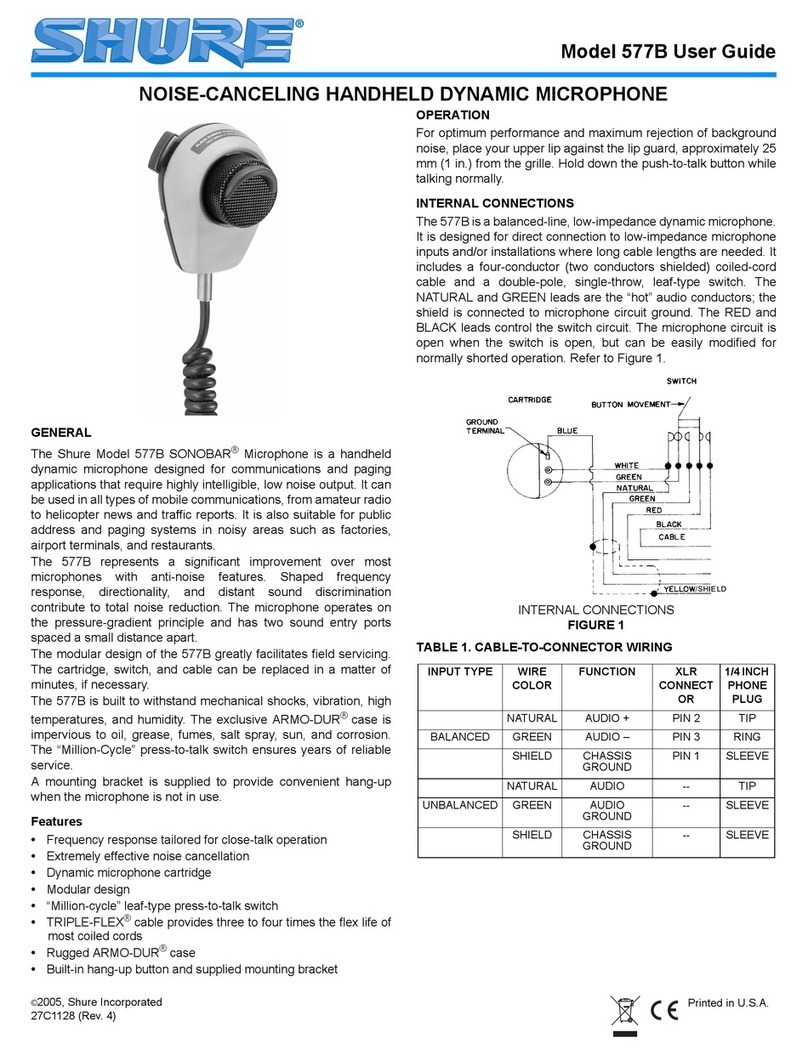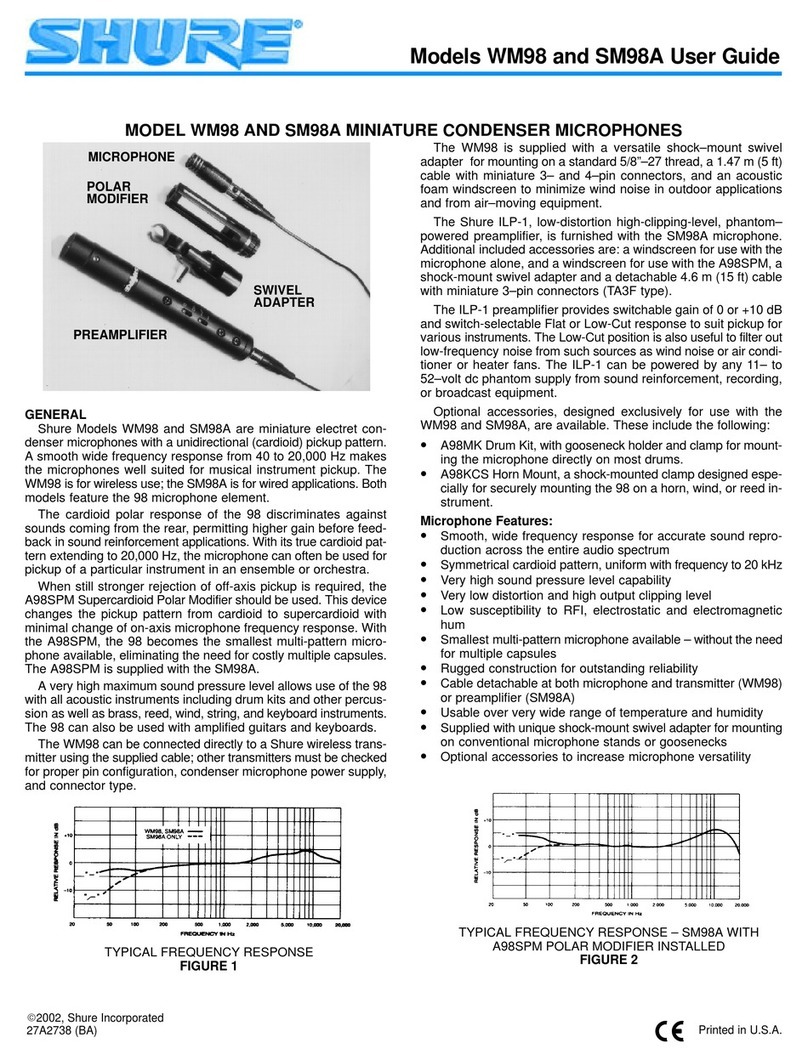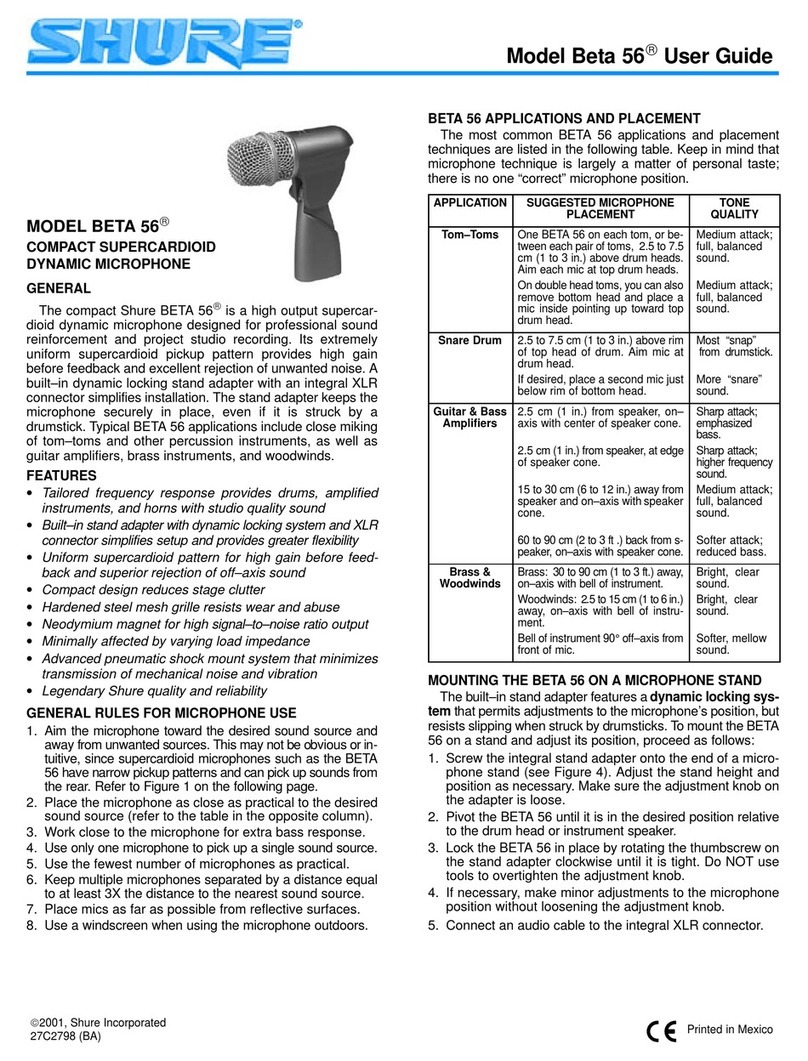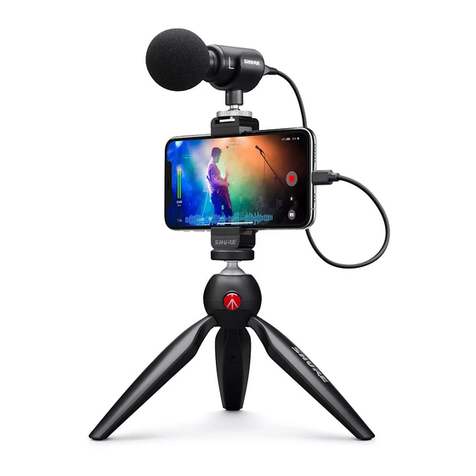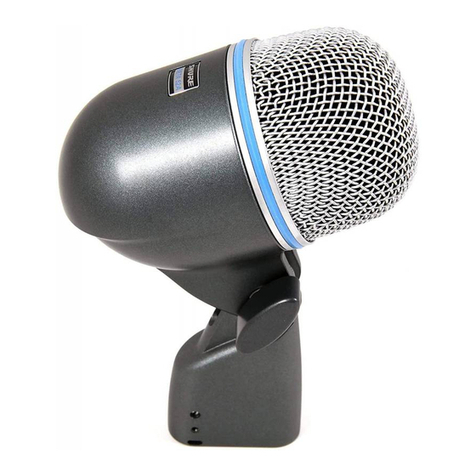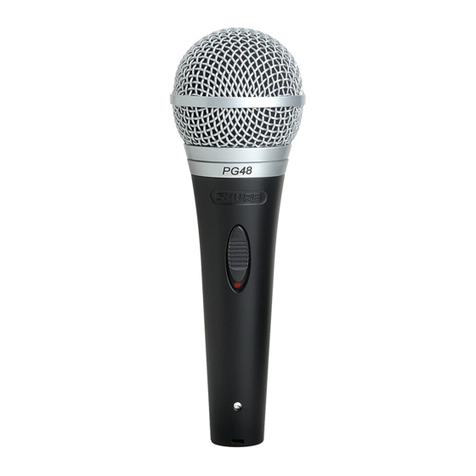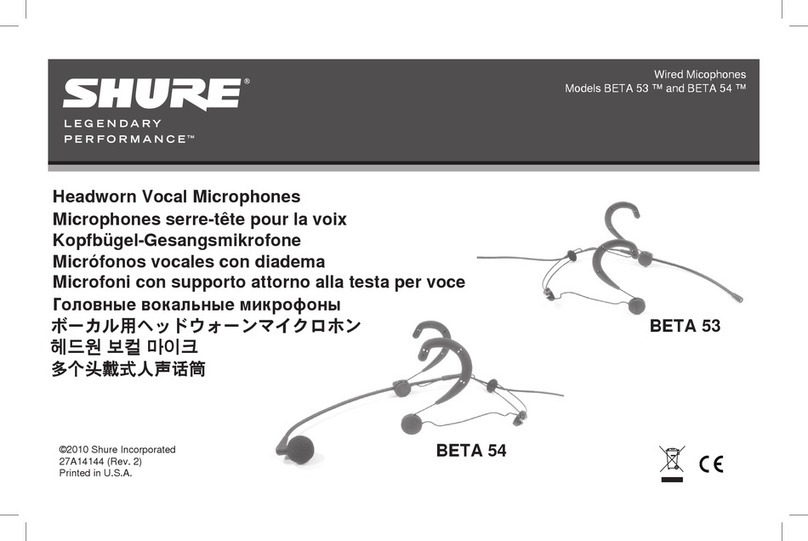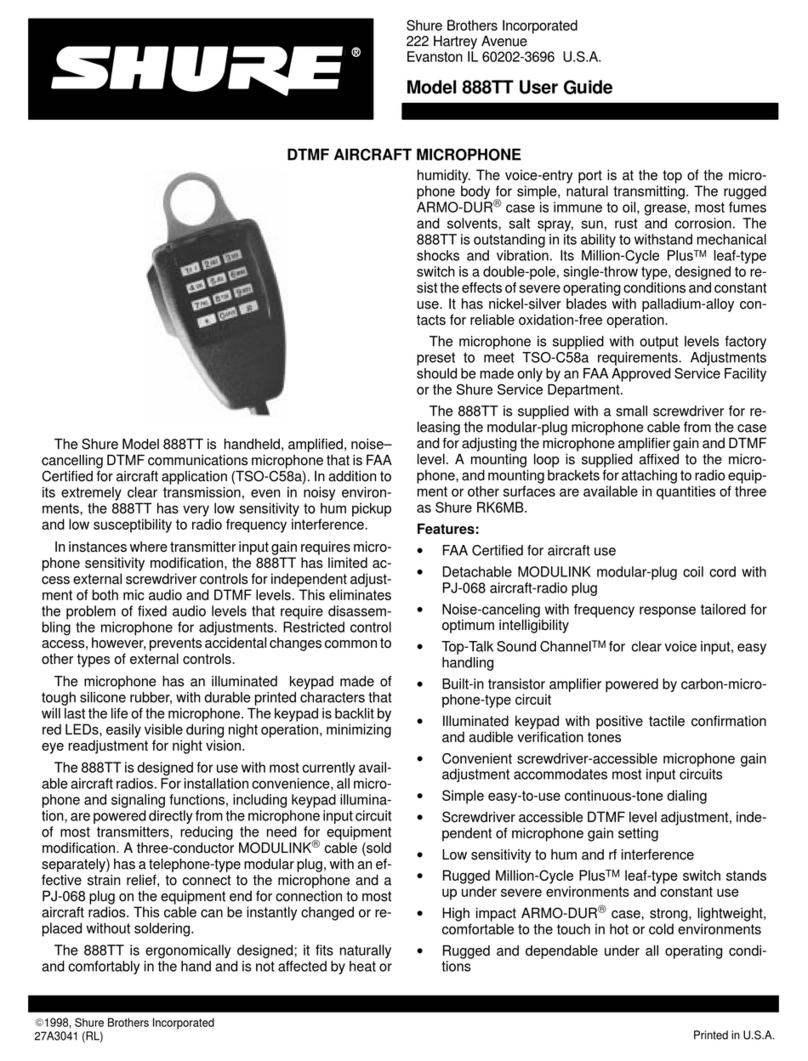21
Caractéristiques
Type de capsule Condensateuràélectret
Courbe de directivité 181/C: Cardioïde
181/S: Supercardioïde
181/O: Omnidirectionnel
181/BI: Bidirectionnel
Réponse en fréquence 20à20,000Hz
Impédance de sortie 110Ω
Sensibilité
tensionencircuitouvert,à1
kHz,typique
Cardioïde: –46.5dBV/Pa[1](4.7mV)
Supercardioïde: –49.5dBV/Pa[1](3.4mV)
Omnidirectionnel: –52.0dBV/Pa[1](2.5mV)
Bidirectionnel: –51.0dBV/Pa[1](2.8mV)
SPL maximum
1kHzavecDHTde1%[2]
Charge de 2500 Ω: Cardioïde: 151.5dBSPL
Supercardioïde: 154.5dBSPL
Omnidirectionnel: 157.0dBSPL
Bidirectionnel: 156.0dBSPL
Charge de 1000 Ω: Cardioïde: 149.0dBSPL
Supercardioïde: 152.0dBSPL
Omnidirectionnel: 154.0dBSPL
Bidirectionnel: 153.5dBSPL
Rapport signal/bruit[3] Cardioïde: 73.5dB
Supercardioïde: 71.5dB
Omnidirectionnel: 70.5dB
Bidirectionnel: 71.0dB
Plage dynamique Charge de 2500 Ω: Cardioïde: 131.0dB
Supercardioïde: 132.0dB
Omnidirectionnel: 133.5dB
Bidirectionnel: 133.0dB
Charge de 1000 Ω: Cardioïde: 128.5dB
Supercardioïde: 129.5dB
Omnidirectionnel: 130.5dB
Bidirectionnel: 130.5dB
Niveau d’écrêtage
à1kHz,DHTde1%
Chargede2500Ω: 10.5dBV
Chargede1000Ω: 7.5dBV
Bruit propre
équivalentSPL,pondéréen
A,typique
Cardioïde: 20.5dBSPL-A
Supercardioïde: 22.5dBSPL-A
Omnidirectionnel: 23.5dBSPL-A
Bidirectionnel: 23.0dBSPL-A
Rejet en mode commun
20à20,000kHz
≥55dB
Polarité Unepressionacoustiquepositivesurlediaphragmeproduitune
tensionpositivesurlabroche2parrapportàlabroche3.
Alimentation 11–52Vc.c.[4]alimentationfantôme(IEC-61938)
2.4mA,maximum
Poids Net 145g(5.1oz)
[1]1Pa=94dBSPL
[2]LaDHTdupréamplificateurdumicrophoneappliquéeauniveaudusignald’entréeestéquivalente
auniveaudesortiedelacapsulepourlavaleurSPLspécifiée.
[3]Lerapportsignal/bruitestladifférenceentreleniveauSPLde94dBetleniveauSPLéquivalent
dubruitproprepondéréA.
[4]Touteslescaractéristiquestechniquesontétémesuréesavecunesourced’alimentationfantôme
de48Vc.c.Lemicrophonefonctionneàdestensionsplusbassesmaisauprixd’uneplagedy-
namiqueetd’unesensibilitélégèrementréduites.
SPECIFICATIONS
Cartridge Type ElectretCondenser
Polar Pattern 181/C: Cardioid
181/S: Supercardioid
181/O: Omnidirectional
181/BI: Bidirectional
Frequency Response 20to20,000Hz
Output Impedance 110Ω
Sensitivity
opencircuitvoltage,@
1kHz,typical
Cardioid: –46.5dBV/Pa[1](4.7mV)
Supercardioid: –49.5dBV/Pa[1](3.4mV)
Omnidirectional: –52.0dBV/Pa[1](2.5mV)
Bidirectional: –51.0dBV/Pa[1](2.8mV)
Maximum SPL
1kHzat1%THD[2]
2500 Ω load: Cardioid: 151.5dBSPL
Supercardioid: 154.5dBSPL
Omnidirectional: 157.0dBSPL
Bidirectional: 156.0dBSPL
1000 Ω load: Cardioid: 149.0dBSPL
Supercardioid: 152.0dBSPL
Omnidirectional: 154.0dBSPL
Bidirectional: 153.5dBSPL
Signal-to-Noise
Ratio[3]
Cardioid: 73.5dB
Supercardioid: 71.5dB
Omnidirectional: 70.5dB
Bidirectional: 71.0dB
Dynamic Range 2500 Ω load: Cardioid: 131.0dB
Supercardioid: 132.0dB
Omnidirectional: 133.5dB
Bidirectional: 133.0dB
1000 Ω load: Cardioid: 128.5dB
Supercardioid: 129.5dB
Omnidirectional: 130.5dB
Bidirectional: 130.5dB
Clipping Level
@1kHz,1%THD
2500Ωload: 10.5dBV
1000Ωload: 7.5dBV
Self Noise
equivalentSPL,
A-weighted,typical
Cardioid: 20.5dBSPL-A
Supercardioid: 22.5dBSPL-A
Omnidirectional: 23.5dBSPL-A
Bidirectional: 23.0dBSPL-A
Common Mode
Rejection
20to20,000kHz
≥55dB
Polarity Positivepressureondiaphragmproducespositivevoltageonpin2with
respecttopin3
Power Requirements 11–52VDC[4]phantompower(IEC-61938)
2.4mA,maximum
Net Weight 145g(5.1oz.)
[1]1Pa=94dBSPL
[2]THDofmicrophonepreamplifierwhenappliedinputsignallevelisequivalenttocartridgeoutput
atspecifiedSPL
[3]S/Nratioisthedifferencebetween94dBSPLandequivalentSPLofselfnoise,A-weighted
[4]Allspecificationsmeasuredwitha48Vdcphantompowersupply.Themicrophoneoperatesat
lowervoltages,butwithslightlydecreasedheadroomandsensitivity.
